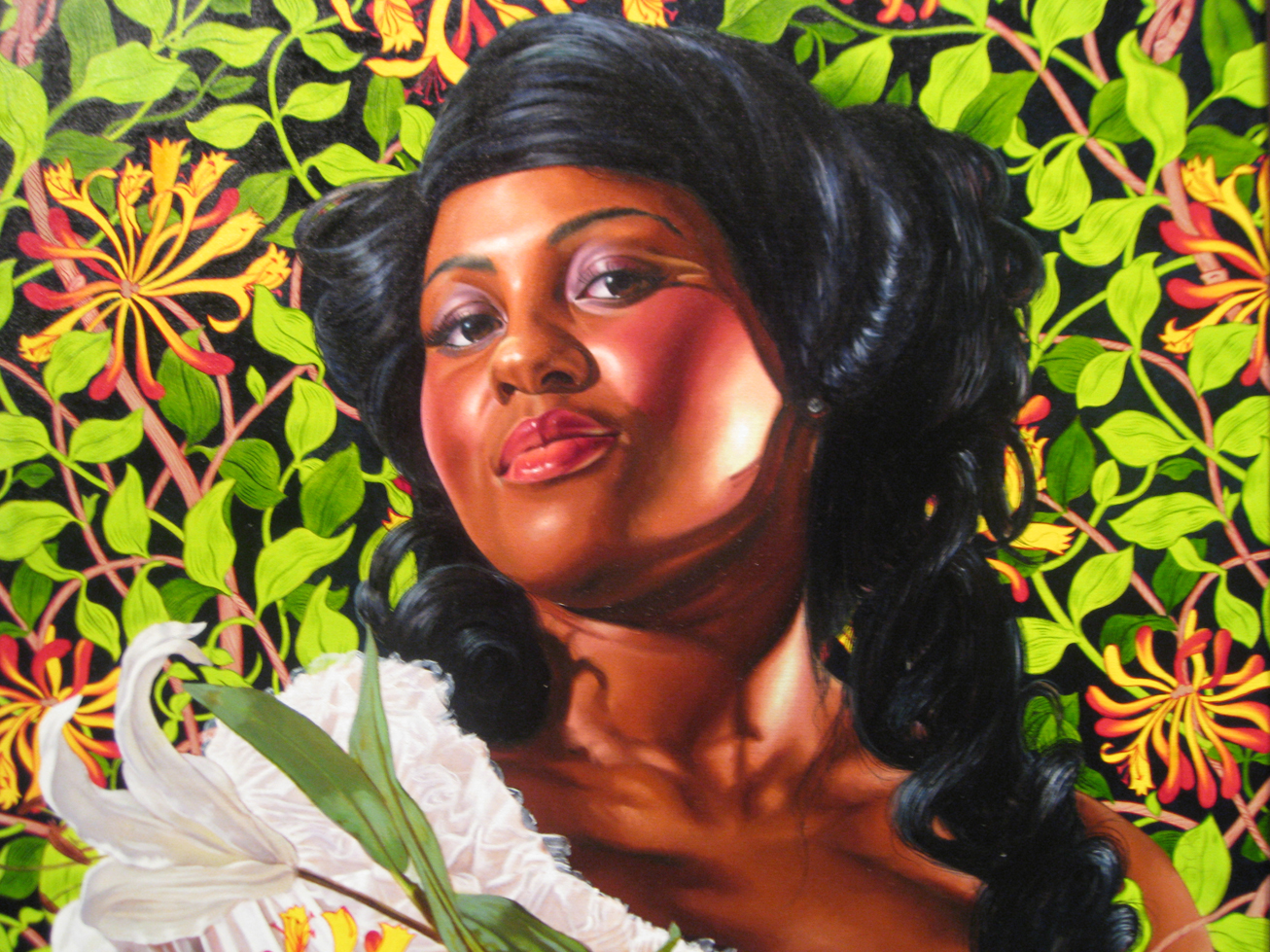NEW YORK—Kehinde Wiley, the prolific, commercially and critically successful portrait artist has conquered many milestones in his brief career. A new series at Sean Kelly Gallery marks two more: first collaboration with a couture designer and, most notably, for the first-time ever his subjects are women.
Known for his depictions of “urban” men of color plucked from streets around the world to pose for his paintings, Wiley chose African American women cast from the streets of New York as models for “An Economy Of Grace.” The 12 works in the exhibit adhere his standards—referencing poses from European art history classics and featuring elaborate decorative backgrounds. The departure, the aesthetic inspiration driving the series, is a collaboration with Riccardo Tisci, the creative director of Givenchy who designed six one-of-a-kind gowns for the women. Outfitted in the Tisci gowns, the women exude femininity.
The artist and designer roamed the Louvre discussing the concept of the project: “society’s ideals of feminine beauty and the frequent marginalization of women of color.”
The name of the exhibit further explores the issue. Wiley says, “The phrase ‘an economy of grace’ speaks directly to the ways in which we manufacture and value grace and honor, the people we choose to bestow that honor upon, and the ways in which grace is at once an ideal that we strive for and something that is considered to be a natural human right.”
The oil portraits on linen and canvas are incredibly detailed and realistic, Wiley’s signature style. While feminine, they also possess strength and social commentary (as one of the paintings–inspired by Caravaggio’s “Judith Beheading Holofernes”–portrays a model holding the disembodied head of a white woman and a bloody sword). And yet, displayed against the deep blue walls of the gallery, their stately regal character is enhanced—giving them all a certain grace.
The exhibit is on view from May 6 to June 16, 2012.
All photos by Arts Arts Observer




Love looking at prints of Black Women. I think he caught the essence of the women in each portrait.